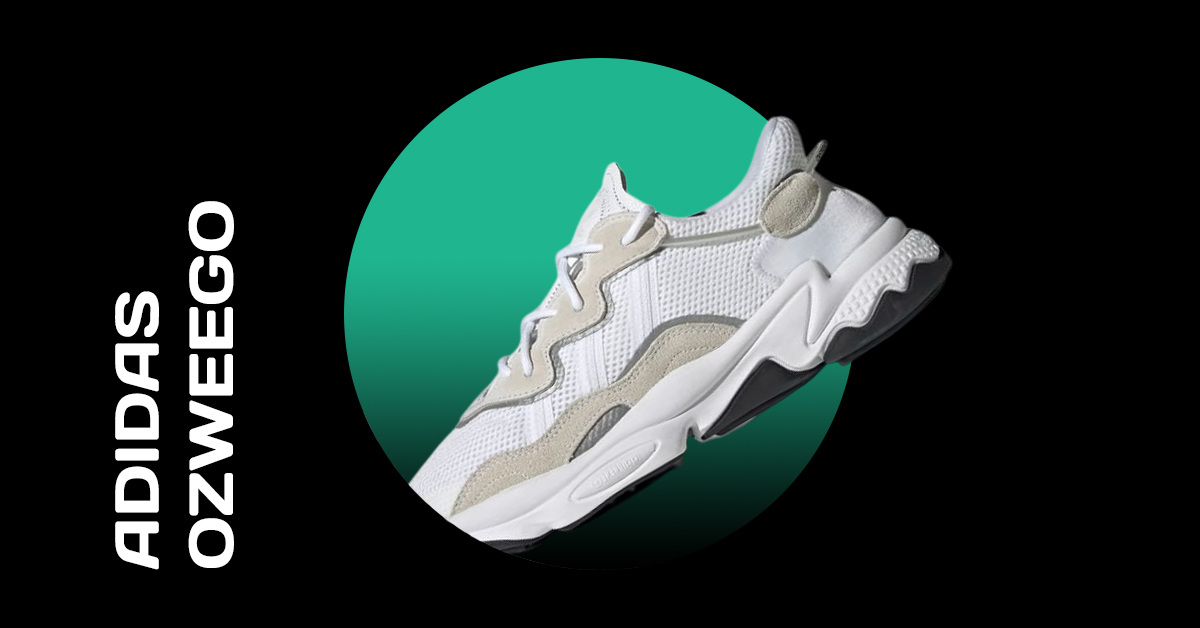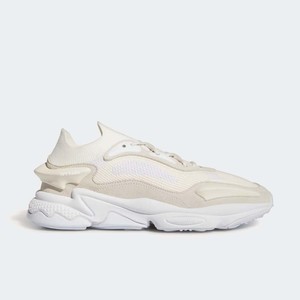Shop adidas Ozweego Sneakers
Shop all adidas Ozweego sneaker releases

Most of the classics from adidas have their origins in the sports segment, only to manifest their popularity in the lifestyle segment. Shoes like the Stan Smith or the Superstar are probably the best examples of how shoe manufacturers like to blur the boundaries between sport and lifestyle. Among these sneakers is, of course, the signature adidas Ozweego, which made its debut in 1996.
The unique shoe was released in the 90s in different variations and already incorporated advanced technologies like the adiPRENE cushioning system or the Torsion Sole Support System into its interior. After more than 20 years, the iconic sneaker is now set to make its comeback and once again thrill countless fans around the globe.
The unique shoe was released in the 90s in different variations and already incorporated advanced technologies like the adiPRENE cushioning system or the Torsion Sole Support System into its interior. After more than 20 years, the iconic sneaker is now set to make its comeback and once again thrill countless fans around the globe.
adidas Ozweego - The Shoe with Many Upgrades
As already mentioned, the Ozweego first saw the light of day in 1996. But it didn't stay with just one release for long. On the contrary, due to its popularity, the unique sneaker underwent a lot of different upgrades to give fans even more joy. The original Ozweego was originally designed as a lightweight running shoe that would be used primarily for competition and training. The adiPRENE cushioning in the front of the shoe was designed to provide the necessary support. Between 1997 and 1998, however, the Ozweego 2 was released and easily took the lead. Once again, the sneaker was equipped with the popular adiPRENE damping system, but the upper was given a few minor changes. After one year, the Ozweego 3 was launched, which integrated the Torsion System into the midsole and thus thrilled countless sneaker fans. Finally, between 1999 and 2000, the final update was released in the form of the Ozweego 4, combining the best attributes and qualities of its predecessors in one shoe. The adidas Ozweego had reached its peak form!
adidas Ozweego - Twofold Comeback
The revival of classics has become an integral part of the sneaker world. It just makes sense to bring very popular shoes back to life and rekindle the love for the icons. The adidas Ozweego is definitely one of them, which is why it was only a matter of time before the legend celebrated its comeback. In 2013, the time finally came and designer Raf Simons took on the unique sneaker. He created a very successful reinterpretation of the Ozweego, which turned out to be a groundbreaking signpost for the coming years. The relaunch came at a time when the sneaker community was very receptive to oversized dad shoes. Some are even sure that the Ozweego laid the foundation for the chunky silhouettes in the following years. There's definitely no denying one thing: The adidas Ozweego had everything that would make a good dad shoe these days, even at its first rebirth in 2013!
This summer, adidas ushered in the next chapter of the legendary sneaker and officially included the shoe in the adidas Originals Collection. Even though the model has to do without Raf Simons this time, it can still convince with the classic combination of mesh, velour and TPU construction. The Throwback colourway impresses with its yellow and blue accents, which are clearly reminiscent of the original colour palette.
This summer, adidas ushered in the next chapter of the legendary sneaker and officially included the shoe in the adidas Originals Collection. Even though the model has to do without Raf Simons this time, it can still convince with the classic combination of mesh, velour and TPU construction. The Throwback colourway impresses with its yellow and blue accents, which are clearly reminiscent of the original colour palette.
adidas Ozweego - the Hottest Releases so far
As you would expect from a revived classic, the Ozweego also gets some sexy colourways. We would like to give you an overview of the freshest CWs so far. To make sure you don't miss any of the future releases, subscribe to our newsletter or download our Grailify app.
- The adidas Ozweego Pride Pack arrived just in time for the eponymous Pride Month and celebrates the significant holidays of the LGBT community. Accordingly, the sole of the sneaker gets a rainbow coating, while the upper convinces with its clean, cream-coloured look.
- The size? x adidas Ozweego attracts attention with its unusual colour combination, which is meant to remind us of the nature of urban life. The chestnut brown upper draws strong parallels to the huge Western Red Cedar trees that grow mainly in the western part of North America. At the same time, the whole look is rounded off by the earthy adiPRENE sole and the lightweight EVA midsole. The blue accents on the tongue and lining of the sneaker, which are reminiscent of the lake in the city of Oswego, are also nice to look at. The cave paintings on the model's insole in particular give the colourway a unique touch.
-
Raf Simons x adidas Ozweego: Belgian fashion designer Raf Simons has teamed up with adidas in 2018 and 2019 to design multiple versions of the Ozweego. The 2019 models are particularly eye-catching as these Ozweegos feature a metallic substructure for an eye-catching look.
OAMC x adidas Ozweego: OAMC (Over All Master Cloth) is a fashion label known for its sophisticated designs and high-quality materials. The collaboration between adidas and OAMC has produced Ozweego styles that combine luxury and streetwear aesthetics.
